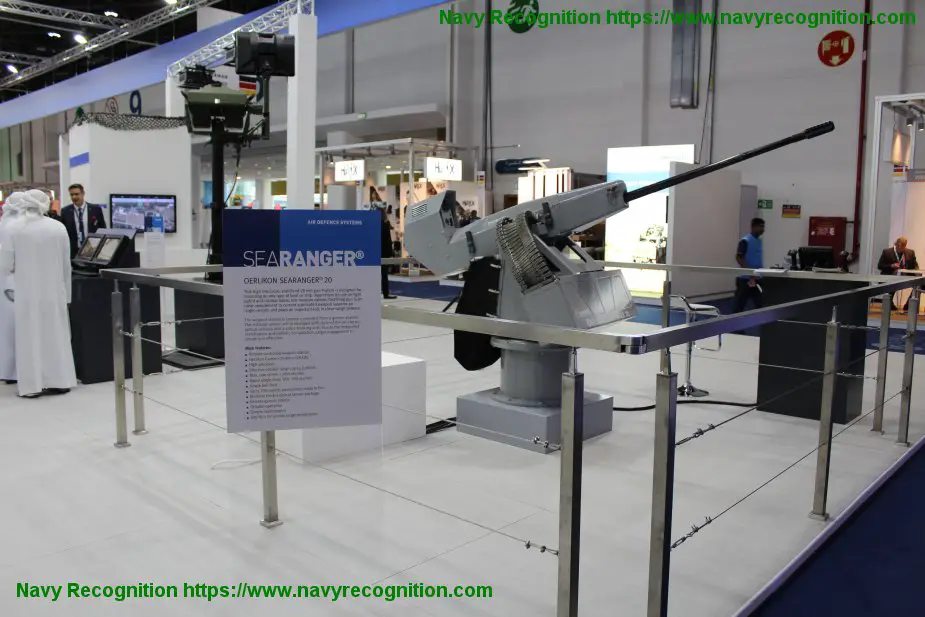Breaking news
NAVDEX 2019 : Rheinmetall promotes naval weapons and ammunition.
No matter what the mission – surveillance operations on the high seas, fighting piracy in shipping lanes or supporting amphibious landings in littoral zones – naval units have to be able to defend themselves against a multitude of threats around the globe. Rheinmetall offers a solution here : the stabilized, remotely controlled Oerlikon Searanger 20 maritime weapon station, teamed with the company’s new SAPPIE-T ammunition. Both are on display at IDEX 2019 at the Rheinmetall stand.
 The Oerlikon Searanger 20 (Picture source : Navy Recognition)
The Oerlikon Searanger 20 (Picture source : Navy Recognition)
Highly precise, the remotely controlled Searanger 20 can be mounted on any boat or ship. Fully stabilized, this 20mm medium-calibre system combines a high rate of fire with excellent accuracy. It can operate in single shot, rapid single shot or burst mode, which makes it especially well-suited for engaging swarms of individual targets at distances of up to 2,000 metres around the ship.
The Searanger 20 is remotely controlled from an operator console, significantly enhancing the safety of the crew. Its sensor unit features state-of-the-art electro-optical sensors for daynight surveillance and an integrated video tracking function. Furthermore, stabilization and the ballistic programs in the fire control unit enable effective engagement of targets from a moving ship platform.
Serving as standard armament of the Searanger 20 is the high-precision 20mm Oerlikon KAE automatic cannon. Extremely reliable, the weapon is also easy to maintain. The ammunition supply consists of 200 20mm x 128 cal. belted cartridges.
Rheinmetall’s newly developed 20mm SAPPIE-T (20 x 128 mm) ammunition is the ideal match for the Searanger 20. SAPPIE-T stands for “semi-armour piercing pyrotechnically induced effect and tracer”. This round combines armour-piercing characteristics with a cascading pyrotechnic impact inside the target, yet contains neither explosives nor fuse. It lends itself extremely well to combatting targets in a maritime environment, and is also safe and easy to transport and store (UN Classification 1.4 C).



















